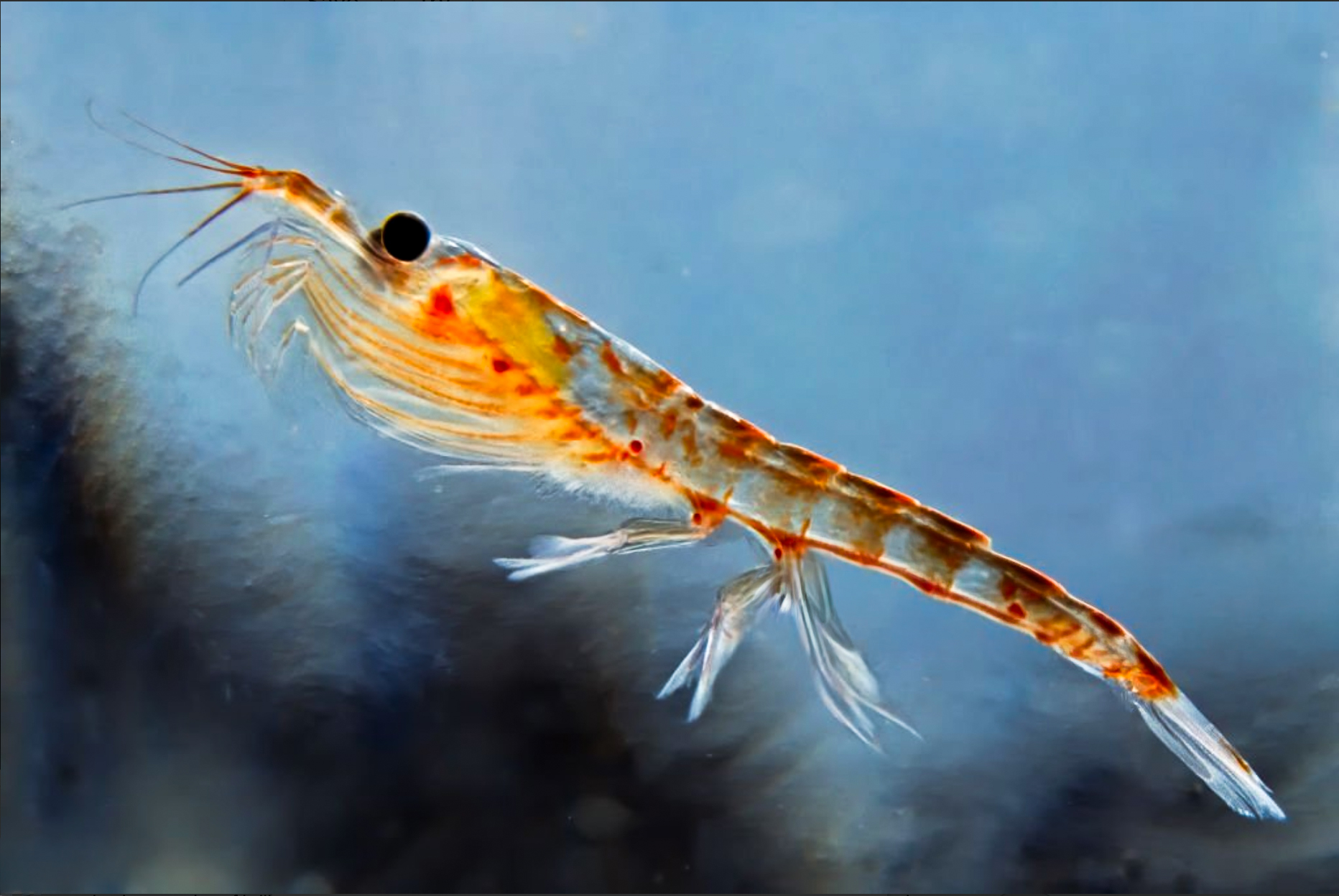Elsa Cabrera, directora ejecutiva Centro de Conservación Cetacea; Juan Carlos Cárdenas, director ejecutivo, Centro Ecoceanos
The year was 1982 when the need to regulate the fishery for a small, shrimp-like crustacean, known as Antarctic krill, culminated in the establishment of the Convention for the Conservation of Antarctic Marine Living Resources (CCAMLR). This multilateral international body, created under the United Nations, aims, as its name suggests, to manage and conserve the ecosystem of the Southern Ocean and Antarctica. From its inception, CCAMLR has recognized that life in the white continent depends on the abundance and health of the antarctic krill. Yet, four decades later, this fundamental truth clashes with a complex reality, where geopolitical and commercial interests intertwine, is testing the very soul of the Convention.
Over 40 years ago, the commercial interest and the intensity of krill extraction were limited by processing technologies available. Preserving the kril onboard was extremely difficult, keeping the fishery at a discreet, marginal level. This allowed CCAMLR to focus on regulating other fisheries. This pause provided a hiatus for the fragile and pressured Southern Ocean ecosystem. However, that truce has now ended.
Recent decades have seen advances in naval engineering, along with processing and preservation technologies for krill, overcoming previous obstacles. The result has been an exponential expansion of this fishery, making it one of the most significant in the Southern Ocean. But as the number of factory ships multiplies and their extraction efficiency is improved, the management system is not evolving at the same pace.
Indeed, CCAMLR’s fisheries management system is based on an “olympic race” approach. This method is as simple as it is concerning. It involves setting an opening date for the fishing season and a closure once the total allowable catch limit is reached. This incentivizes authorized industrial fleets in each area to compete in a frantic race to capture the largest possible share of the annual quota. Currently, the result of this fisheries management is a concentration of pressure over a brief period of time and—more gravely—within a confined space, directly on krill swarms.
The failure to ensure a better and more rational distribution of fishing effort in 2024 meant that the entire krill catch limit—620,000 tons annually—was alarmingly concentrated in the waters of the Antarctic Peninsula. Known as the biological heart of the frozen continent, this is a vital feeding area for penguins, seals, and whales.
The combination of these factors is deeply troubling. For the first time in history, the Antarctic krill fishery closed prematurely on August 1, 2025, having reached its catch limit in record time. This extractive milestone is not a management success, but rather a symptom of a predatory system under strain. As the Olympic race plays out, its deadly consequences—often perceived as collateral damage—accumulate. At least six whales have died since 2020 around the western Antarctic Peninsula and the South Orkney Islands due to lethal interactions with the large factory ships harvesting krill. Two of these deaths—in 2024 and 2025—involved the Chilean vessel Antarctic Endeavour, owned by Pesca Chile S.A., part of the Frío Sur holding group.
The Perfect Storm in the Southern Ocean
Beyond the fishing pressure, Antarctic krill populations are also suffering the impacts of climate change. During the austral winter, krill larvae depend critically on algae that grows under the sea ice surface. Less ice means less food and fewer refuge areas for this crustacean.
2022 and 2023 saw the lowest recorded extents of Antarctic sea ice in history. This is especially concerning, considering that scientific research shows these conditions shrink the krill’s distribution area. The contraction of krill habitat due to global warming coincides with the explosive concentration of the fishing efforts , turning the Antarctic Peninsula — one of the places on Earth where temperatures are rising most rapidly — into the epicenter of an ecological crisis.
The combined pressure of climate change and krill fishery jeopardizes one of the greatest conservation successes of recent times: the slow but hopeful increase of whale populations, an achievement of the global moratorium on commercial whaling adopted in 1982 by the International Whaling Commission (IWC). It is profoundly baffling that the same year the international body tasked with conserving the biodiversity of the Southern Ocean was created, the IWC made its historic decision to save the marine giants inhabiting its waters. Today, the lack of concrete action by CCAMLR is threatening the IWC’s success.
Faced with this troubling reality, CCAMLR members convened last Monday at its headquarters in Hobart, Australia, to address, among other issues, the accelerated growth and increasing concentration of the krill fishery. While this is not a new task, the current challenge far surpasses those of previous years. The recurring whale deaths, the concentration of kril fishing operations in critical areas for the Antarctic biodiversity, and the unchecked race to reach the maximum catch limit in the shortest time possible are not only alarming for their direct impact on the ecosystem, but they also reveal the weakening of the multilateral marine conservation framework. CCAMLR’s lack of leadership threatens the fulfillment of its fundamental mandate: the effective conservation of the species that underpins all Antarctic marine life.
Considered a leading example of international management and conservation for decades, CCAMLR is now advancing towards a legitimacy crisis. Its inaction stems not from a technical problem, but a political one, which is undermining the precautionary principle that should guide all its decisions. This deviation is starkly evident in the stalled creation of a Marine Protected Area (MPA) in the Antarctic Peninsula (Domain 1). Although a large majority of its members support this proposal, the systematic and unjustified opposition from the Russian Federation and the People’s Republic of China has blocked the consensus required for its adoption. Establishing this MPA would not only protect cetacean populations whose reproduction depends on krill but would also safeguard crucial breeding and refuge zones vital for the survival of Antarctic krill itself.
Over the next two weeks, the deliberations in Hobart will transcend debates about quotas and fishing seasons. What will truly be tested is CCAMLR’s capacity to fulfill its mandate of protecting the biodiversity of an ecosystem that is essential for sustaining life and guarenting the well-being of the entire planet. The outcome will demonstrate whether this international body can effectively respond to the conservation needs of the 21st century or if, contrary, it will dilute its precautionary approach, prioritizing geopolitical and commercial interests above its conservation mandate.



